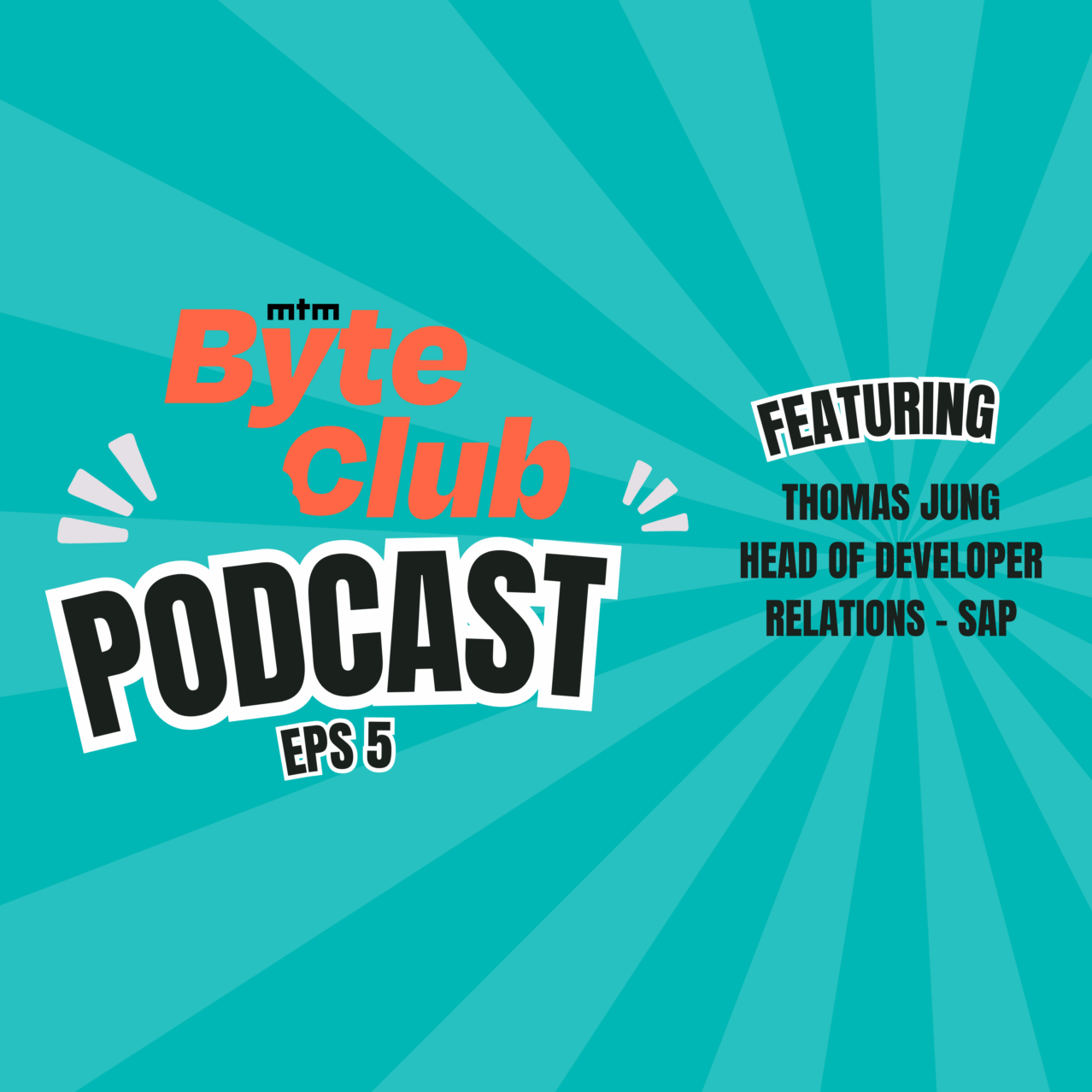In our latest episode of Byte Club, we had the pleasure of speaking with Thomas Jung, who leads the developer advocacy and developer relations unit at SAP. As one of the world’s largest enterprise software companies, SAP’s perspective on technology adoption, cloud migration, and artificial intelligence offers valuable insights for businesses navigating digital transformation.
Enterprise innovation in the cloud era: Insights from SAP’s Thomas Jung
In our latest Byte Club podcast, we spoke with Thomas Jung, who leads developer advocacy and relations at SAP. His insights on cloud migration, AI implementation and enterprise software evolution reveal valuable strategies for businesses navigating digital transformation.
Cloud transition, challenges and opportunities
The shift from on-premises to cloud deployment presents unique challenges for enterprise software. “Moving to the cloud is a change in infrastructure, but also in concepts as we move towards software as a service and multi-tenancy,” Thomas explained. Many organisations remain hesitant to place sensitive corporate data in shared environments.
Yet this transition creates significant opportunities. Cloud computing enables separation between core software and customer extensions, allowing businesses to innovate while maintaining critical systems. At SAP’s recent conference, this was the primary topic of discussion, even surpassing interest in AI.
The long tail of enterprise software
What distinguishes enterprise software is its extraordinarily long lifecycle. While typical software might have a support lifespan of two to three years, SAP’s solutions often require support for 15 years or more. Some customers continue running custom code written decades ago.
“That’s both a blessing and a curse,” Thomas noted. “Customers get value from their investment for decades, but tend to fall behind on newer technologies.” This creates a unique challenge for developers, who often lack authority to implement upgrades that would provide access to new capabilities.
SAP’s approach to AI
SAP has developed an “AI core” that connects to multiple large language models, similar to how they created abstraction layers for databases and operating systems.
“Depending on what you ask, a business question or code generation request, we redirect to different language models behind the scenes,” Thomas explained. “Some are better for code generation, others for natural language processing, and some are simply more cost-effective.”
Rather than creating its own LLM, SAP focuses on retrieval augmented generation, injecting business IP at that layer to maintain data security while leveraging AI capabilities. This approach protects both SAP’s intellectual property and customers’ confidential information.
Democratising machine learning
The generative AI boom has sparked renewed interest in traditional machine learning. Thomas noted increased demand for ML workshops focusing on data processing rather than natural language generation.
This trend is particularly valuable in enterprise settings where data scientists are scarce. AI tools are enabling “citizen ML engineers”, traditional developers without specialised data science backgrounds, to leverage advanced algorithms through AI assistance.
“We’re using generative AI tools to make it easier to code and create things with ML,” Thomas shared. “The average report writer is now coming to learn ML and doing deeper analysis.”
Developer advocacy in the enterprise space
Unlike advocates promoting adoption of new products, Thomas’s team focuses on awareness and education for developers already within the SAP ecosystem.
“Developers in our ecosystem can get stuck in one place. Something works and they stick with it,” he explained. To address this, his team delivers multi-channel content, from weekly news programmes to podcasts and documentation, recognising that different generations of developers prefer different formats.
Looking ahead
When asked about future technologies, Thomas mentioned quantum computing as something they’re monitoring, although its applications for business data remain uncertain.
More immediately, he sees AI agents as the next evolution, software that can chain together different AI capabilities and work across platforms. “Will you be asking Siri a question a year from now and it answers with data from a backend ERP system? I think it probably will,” he predicted.
Balancing innovation with practicality
For organisations evaluating new technologies, Thomas emphasises practical considerations. Will it address real business needs? Can it integrate with existing systems? Will it function effectively in day-to-day operations?
“Sometimes something makes for an excellent demo, but will the person on the shop floor really use it every day?” Thomas explained. “You’ve got to bring it back to whether it can be used in the day-to-day environment.”
As enterprise software continues evolving towards cloud and AI integration, organisations must find ways to modernise without disrupting the essential business processes that depend on these systems, striking the delicate balance between innovation and stability that has always defined enterprise technology.
This blog post summarises the conversation from the latest Byte Club podcast hosted by Michael Underhill, Head of Developer Consultancy at MTM, with Thomas Jung of SAP. For the full conversation, listen to the complete podcast episode.
